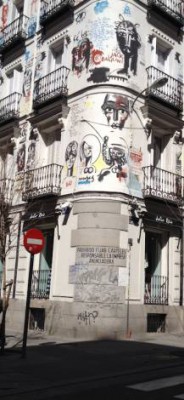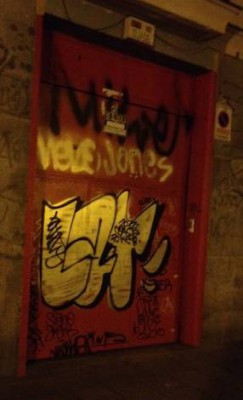MADRID, SPAIN. Why would someone activate the emergency brake on the metro? Well, this is a new tactic some graffiti artists are using in Spain in order to tag a train (one of the best graffiti platforms since it reaches so many eyes). This practice, first reported in Madrid, is now even spreading to other countries. In an era of increasing surveillance, graffiti artists are creating a new chapter in history in their struggle to perform their art.
An immediate recognizable element of Madrid’s visual ambiance is its graffiti. Graffiti was first introduced to Madrid in the eighties with two different styles, that of a unique Madrid style, called Graffiti Autóctono Madrileno, and that of a New York style. The Madrid style was unique and developed separate from an outside influence. It was, however, influenced by a punk scene that existed in Madrid during this time. This type of graffiti is mostly composed of tagging, which is a type of graffiti where an artist “tags” their name or logo in a consistent thematic manner. The movement was led by an artist named Muelle. The artists originally only drew on surfaces that wouldn’t need to be cleaned, like advertisement billboards.
This all changed in 1987 when artists entered the Empalme subway station to tag subway cars. The station was close, in a residential neighborhood, and small, making it a prime spot to tag. The movement was following the New York movement, which had for a while been using trains as a canvas (since 1971). Eventually, the Madrid subway cars became covered with graffiti.
American culture soon prevailed, and the Madrid style became more rare as more artists embraced the New York style. The New York style spread around the world. Graffiti’s grouping with hip hop music and break dancing helped give it more visibility. The movement may have hit Madrid a little later than in the rest of Europe because of the slow general speed of Spanish cultural assimilation in post-Franco years.
Today, graffiti is changing. It is getting harder to create graffiti with more security cameras and faster clean ups. Further, the expansion of electronic music is diverting attention away from graffiti. Madrid, like any cities, has a unique relation with graffiti. The stopping of metro cars shows that graffiti will continue to adapt to changing times.



